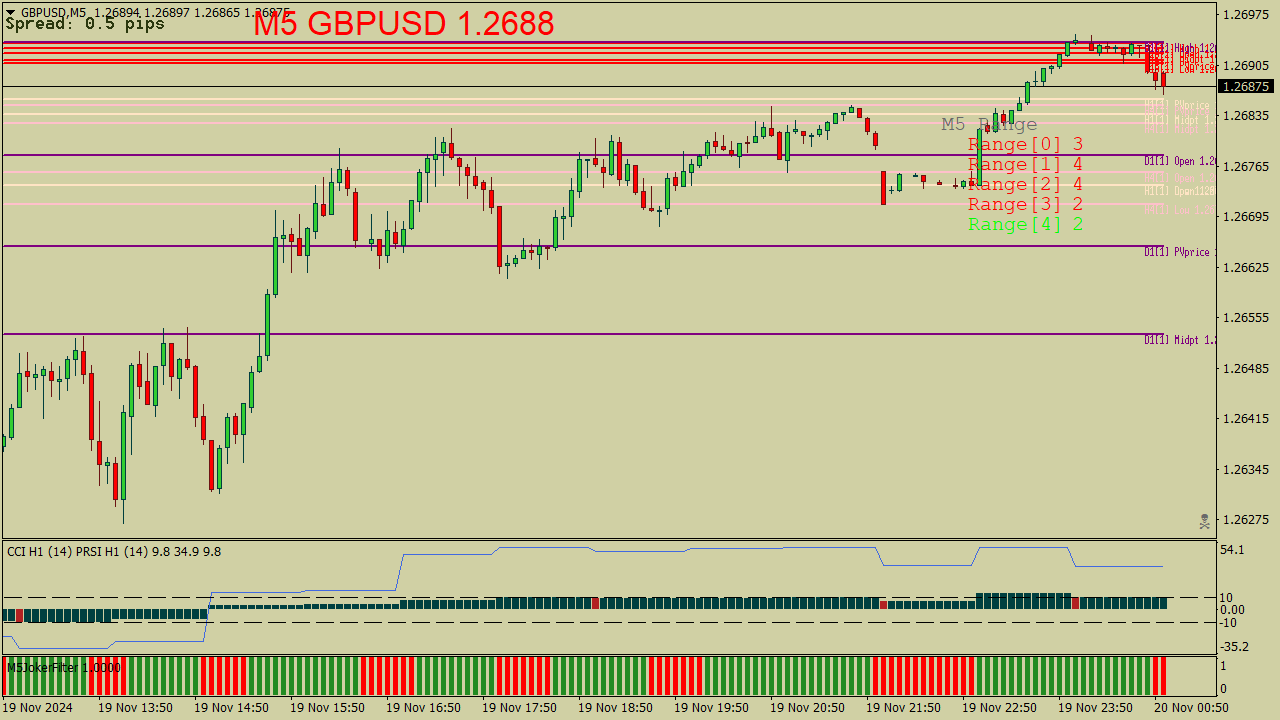Breakout System with RSI and CCI

↪️ DOWNLOAD IT BELOW ⤵️
Breakout trading is a strategy focused on entering trades when the price of an asset moves outside a defined support or resistance level with increased volume. This strategy relies on the belief that once a price breaks through these levels, it is likely to continue in that direction for some time. Successful breakout trading requires a solid understanding of market dynamics, technical analysis, and disciplined execution.
Key Concepts of Breakout Trading
1. Support and Resistance Levels: These are key price points on a chart. Support is the level where a downward price trend may pause due to buying interest, while resistance is where an upward trend may stall due to selling interest. Identifying these levels helps traders recognize potential breakout points.
2. Volume: Volume is crucial in breakout trading. A breakout accompanied by high volume indicates strong conviction among traders and increases the likelihood that the price movement will continue. Conversely, a breakout on low volume can signal a potential false breakout.
3. Types of Breakouts:
• Bullish Breakout: This occurs when the price breaks above resistance levels, indicating potential upward momentum and a buying opportunity.
• Bearish Breakout: This occurs when the price falls below support levels, indicating potential downward momentum and a selling opportunity.
Identifying Breakout Points
To successfully trade breakouts, traders must identify reliable breakout points. Here are methods to enhance your breakout identification skills:
1. Chart Patterns: Recognizing classic chart patterns (such as triangles, flags, or head-and-shoulders) can help anticipate breakout points. For instance, a triangle pattern can signal that a breakout is imminent as price converges towards a point.
2. Trendlines: Drawing trendlines can highlight potential breakout areas. If the price consistently touches a trendline without breaking it, a breakout could occur when the price finally crosses that line.
3. Moving Averages: Traders often use moving averages as dynamic support and resistance levels. A price crossing above or below a moving average can indicate a breakout.
Setting Entry and Exit Points
Defining clear entry and exit points is crucial for effective breakout trading:
1. Entry Point: Enter the trade when the price crosses either support or resistance, accompanied by a significant increase in volume. Some traders prefer to wait for a confirmed close above/below the level rather than entering on the initial spike to minimize the risk of false breakouts.
2. Stop Loss: To mitigate risk, set a stop-loss order slightly below the breakout point for bullish trades or above it for bearish trades. This safeguards against the possibility of false breakouts.
3. Take Profit: Determine profit targets based on prior price action, key Fibonacci levels, or a set risk-reward ratio (typically aiming for at least 2:1 or 3:1).
Confirmation Techniques
Using confirmation techniques can help ensure that a breakout is valid:
1. Retest: Often, price will retrace back toward the breakout level after an initial breakout. A retest of the breakout point can serve as a confirmation that the level is now support (for bullish breakouts) or resistance (for bearish breakouts).
2. Candlestick Patterns: Look for specific candlestick formations, such as engulfing patterns, hammers, or spinning tops, close to breakout levels. These patterns can provide additional confirmation of the breakout’s legitimacy.
3. Technical Indicators: Utilize indicators such as the Relative Strength Index (RSI) or Moving Average Convergence Divergence (MACD) to confirm the strength of the breakout. For instance, an RSI reading above 70 after a bullish breakout may indicate overbought conditions.
Managing Risk
Risk management is critical in breakout trading:
1. Position Sizing: Determine position sizes based on your overall portfolio size and risk tolerance. A common guideline is to risk no more than 1-2% of your capital on a single trade.
2. Avoiding Overtrading: Stick to your trading plan. Avoid the temptation to chase breakouts that do not meet your criteria, as this could lead to increased losses.
3. Market Conditions: Be mindful of broader market conditions, as high volatility or unfavorable news can drastically impact breakout performance. Avoid trading during major economic announcements or events when the market is likely to be unpredictable.
Psychological Aspects of Breakout Trading
Trading psychology plays a significant role in success:
1. Discipline: Stick to your trading plan. Emotional decisions often lead to poor outcomes, so maintain discipline when entering or exiting trades.
2. Patience: Wait for high-probability setups instead of forcing trades. Breakout setups take time to develop, and rushing can lead to missed opportunities or losses.
3. Self-Reflection: Regularly review your trades to learn from both wins and losses. Understanding your mistakes and successes can enhance future performance.
Conclusion
Breakout trading can be an effective strategy when applied with attention to detail and discipline. By understanding key concepts like support and resistance, using confirmation techniques, implementing strong risk management practices, and developing a disciplined mindset, traders can enhance their chances of success. Like any trading strategy, practice and continuous learning are essential to mastering breakout trading. As always, consider paper trading or using a demo account to refine your techniques before committing real capital to this dynamic trading strategy.